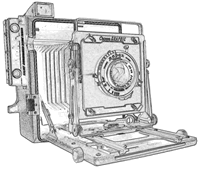 I’ve been developing software since the days of the Apple II. Back then everyone who used a microcomputer had to know something about how software worked. Most people just wanted to use VisiCalc or play games on those early machines but a few of us were fascinated by the technology. I can tell you the exact day I became a programmer. It was Thanksgiving Day 1979. After a marathon twenty hour session learning MS BASIC I could code. It was such a rush.
I’ve been developing software since the days of the Apple II. Back then everyone who used a microcomputer had to know something about how software worked. Most people just wanted to use VisiCalc or play games on those early machines but a few of us were fascinated by the technology. I can tell you the exact day I became a programmer. It was Thanksgiving Day 1979. After a marathon twenty hour session learning MS BASIC I could code. It was such a rush.
From that early day I started writing code for money and continued to do so until a couple of years ago. Suddenly after I turned sixty it was like someone turned off the light. Software developers are young and I was not young. Over the years I had opportunities to become a manager but the code always spoke to me. So I became an ex software developer.
Now after some time has passed it seems that code still speaks to me. In fact I have begun to recapture some of the excitement that I felt in the early days. I no longer have endless meetings, pressing deadlines or code reviews. Now I get to write code to make the machine personal again. My projects are small and completely non-commercial. Most run on my desktop machine but I dabble a bit with mobile Android stuff.
A few months ago I put together an application to generate PDF calendar sets and web ready images. My idea was to be able to take a finished full sized photograph and generate several sizes of images for publishing online along with two different calendars types in encrypted PDF format. This has worked extremely well. I can now generate all the image content for a post on phototrice.com in a few seconds with no hand work.
My old habits have also served me well in that I continue to write reusable object code. This has come in handy for my latest project creating photo mosaic images. This project highlights the differences between makers of things and consumers of things. It would be simple and faster to pay a few bucks to buy some photo mosaic software. It would be simple and boring that is. It is better for me to build the software and learn something new.
To that end I am finishing up the first phase of the project which consists of discovering images, cataloging and producing graphic tiles. There are lots of ways to accomplish this task. I decided to leverage my existing code from the calendar project to automate Photoshop to do the imaging work and use a Sqlite database to manage the cataloging. Works like a charm.
I’m really looking forward to the next phase which is actually creating the mosaic images. I will be writing code using the .Net framework rather than automating Photoshop to accomplish this. It is the interesting part for me. I have done quite a bit of document imaging work over the years but not much actual graphics programming. It should be fun. So in a few weeks you may see some really bad photo mosaic images here on phototrice.com.

 People get into photography for many reasons. I suspect that most of us who reach the point of competency with cameras have a strong desire to show work in public. I certainly do. So as a non-professional, how do you gain an audience for your photography? The simple answer is that I don’t know and I’ve never met anyone who could answer that question adequately. In many ways it comes down whether your ultimate goal is to market your photographic skills and of course, ego.
People get into photography for many reasons. I suspect that most of us who reach the point of competency with cameras have a strong desire to show work in public. I certainly do. So as a non-professional, how do you gain an audience for your photography? The simple answer is that I don’t know and I’ve never met anyone who could answer that question adequately. In many ways it comes down whether your ultimate goal is to market your photographic skills and of course, ego.